26 degrees F!
Freezing cold night last night! Frozen water trough makes this bat (and his friends) unhappy!
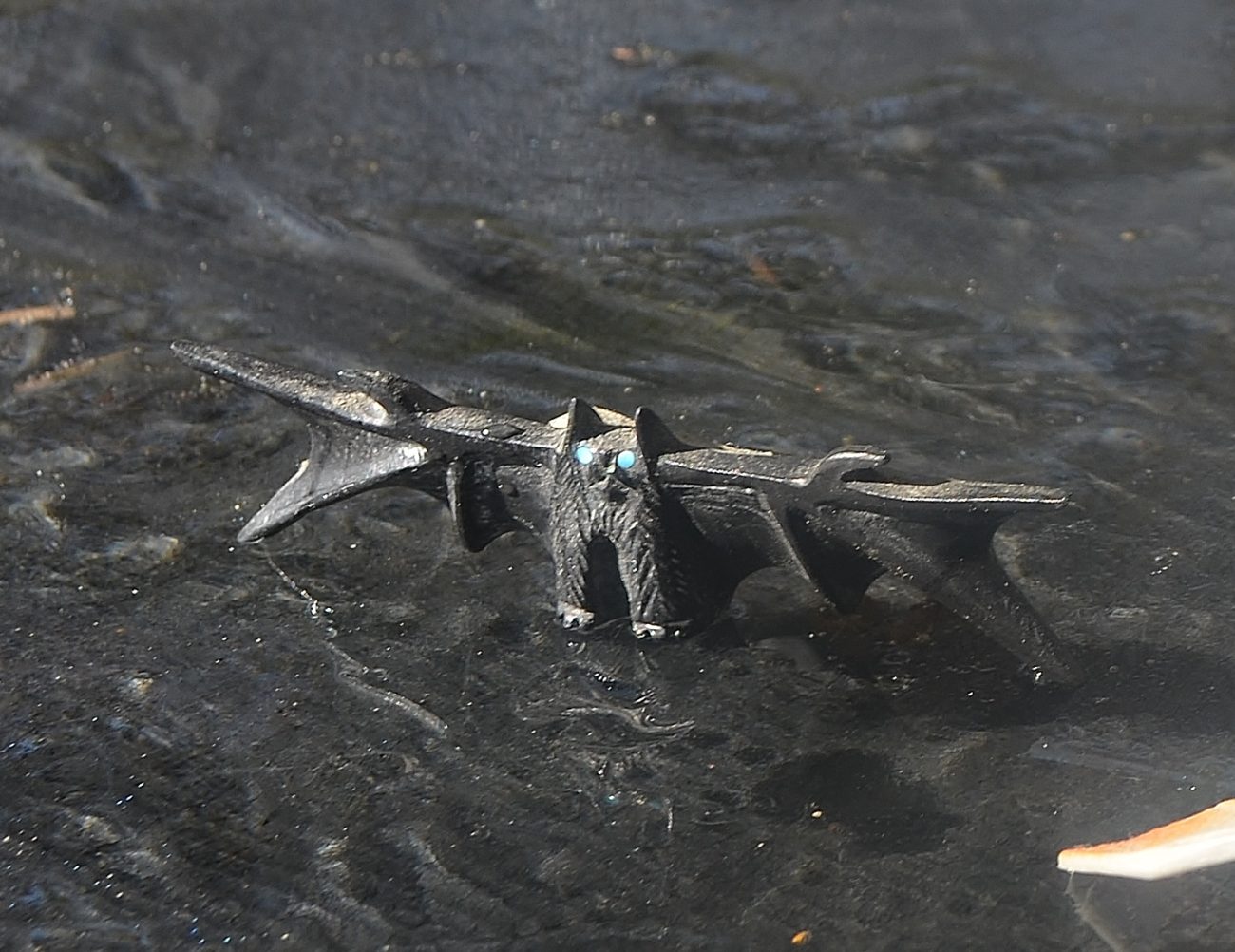

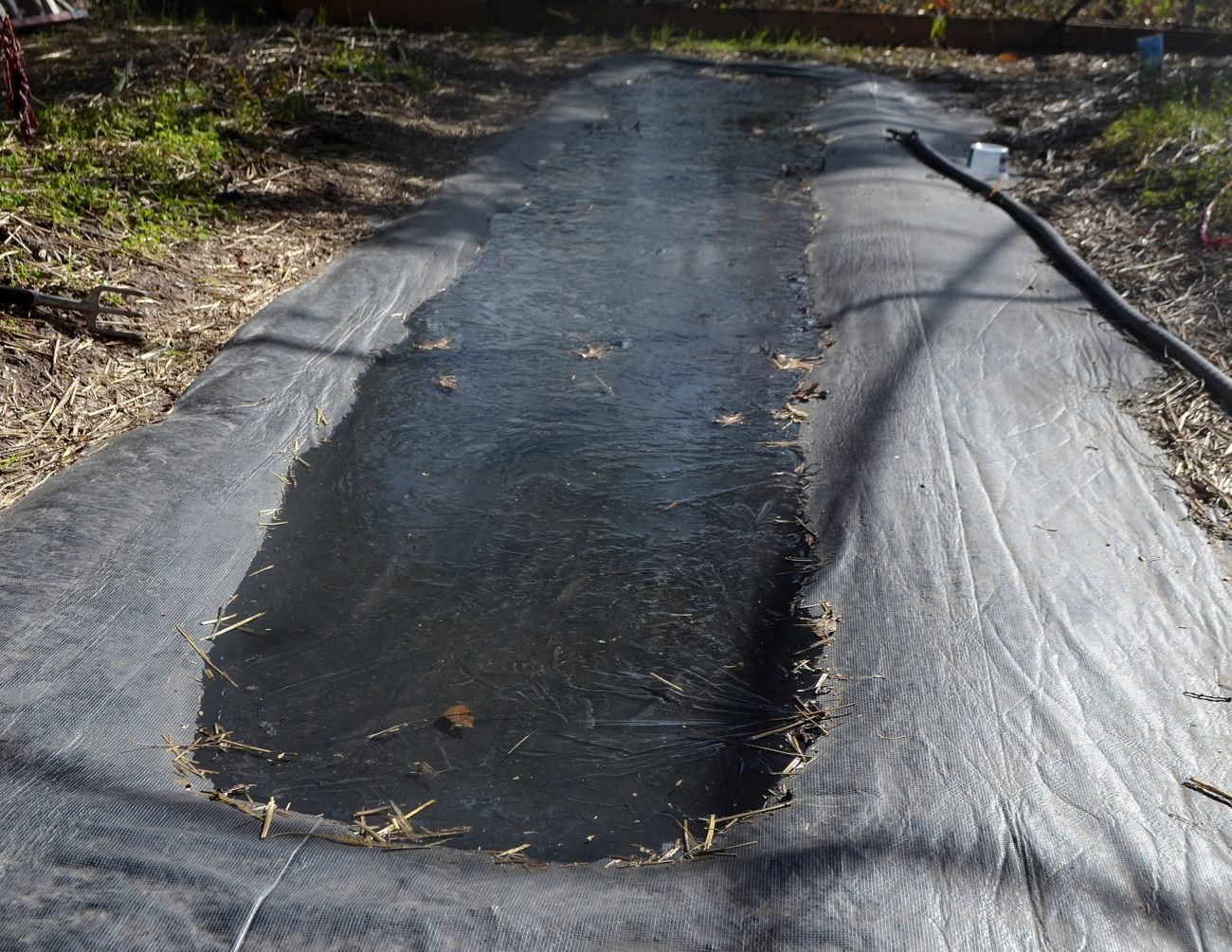
Freezing cold night last night! Frozen water trough makes this bat (and his friends) unhappy!



Dear Bat Friends,
Please remember the little ones as we count our blessings.
Donate Now! to help Gabe the red bat and pups like this free-tailed baby.
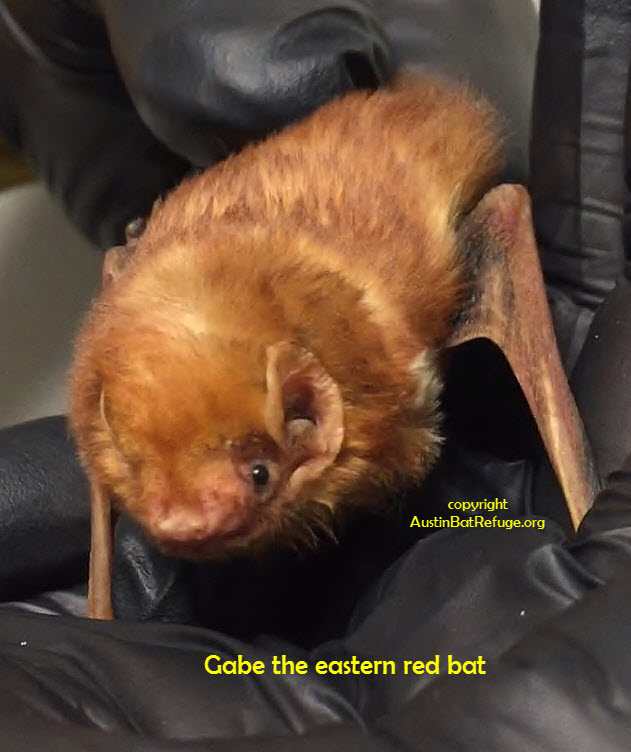

As we enter the holiday season, the world celebrates community, supporting the causes that make the world a better place for all its inhabitants. In our first year, Austin Bat Refuge has already created a center of gravity, attracting donations and a small core of young interns, many or whom will go on to careers in wildlife work. In this season of giving, we ask you to get involved and support Austin Bat Refuge, the only organization in Central Texas caring exclusively for orphaned, injured, and displaced bats.
Your kind donation is critical to bats, our fascinating friends and allies.
Donate Here to help these wonderful, misunderstood beings.
Or write a check and mail to:
Austin Bat Refuge
P.O. Box 49902
Austin, TX 78765
Here are other ways you can show your support:
Sign up for our Newsletter:
Volunteer:
Donate Items:
and yes, as many of you have done, even
Rescue a Bat in Trouble
or simply:
Follow us on Social Media:
Facebook
Twitter
Instagram
Those of you who have brought us an injured bat may have received the following note from us, thanking you for your efforts. We’ll include it here for those of you landing here from social media:
Dear Bat Friend,
Thank you for your kindness in taking the time to rescue the bat you brought to us; we are in awe of the people who have gone so far out of their daily routine to help an animal in trouble.
We hope that you found it a meaningful experience. It meant a great deal to the bat you rescued, and to us; you are part of an ever-growing group of people who care for an animal that many find, at best, unlovable.
Attempting to rescue a bat can seem frightening for people who encounter them, displaced or injured, around their homes or workplaces, and you may even have been ridiculed by those who don’t understand that bats are worthy of care. But you know how rewarding it can be to make the effort to help wildlife.
If it is possible for you to donate, we ask for your financial assistance so that we can continue to serve as a refuge for the injured and orphaned bats that are brought to us by caring people like you.
Your donation will help save the lives of many more little bats in trouble, like the one you saved.
Please Donate Here
And please become a part of our team by joining our Bat Pack!
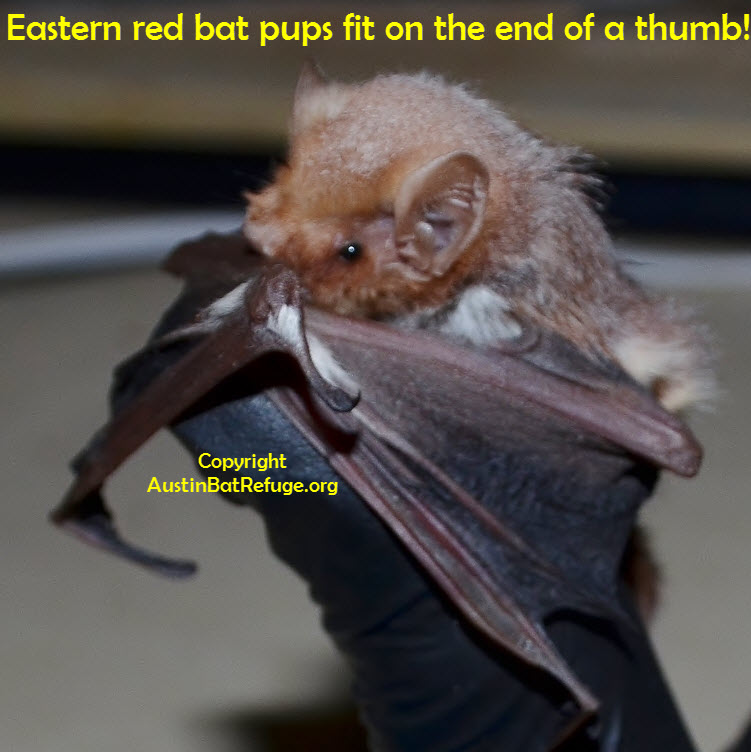
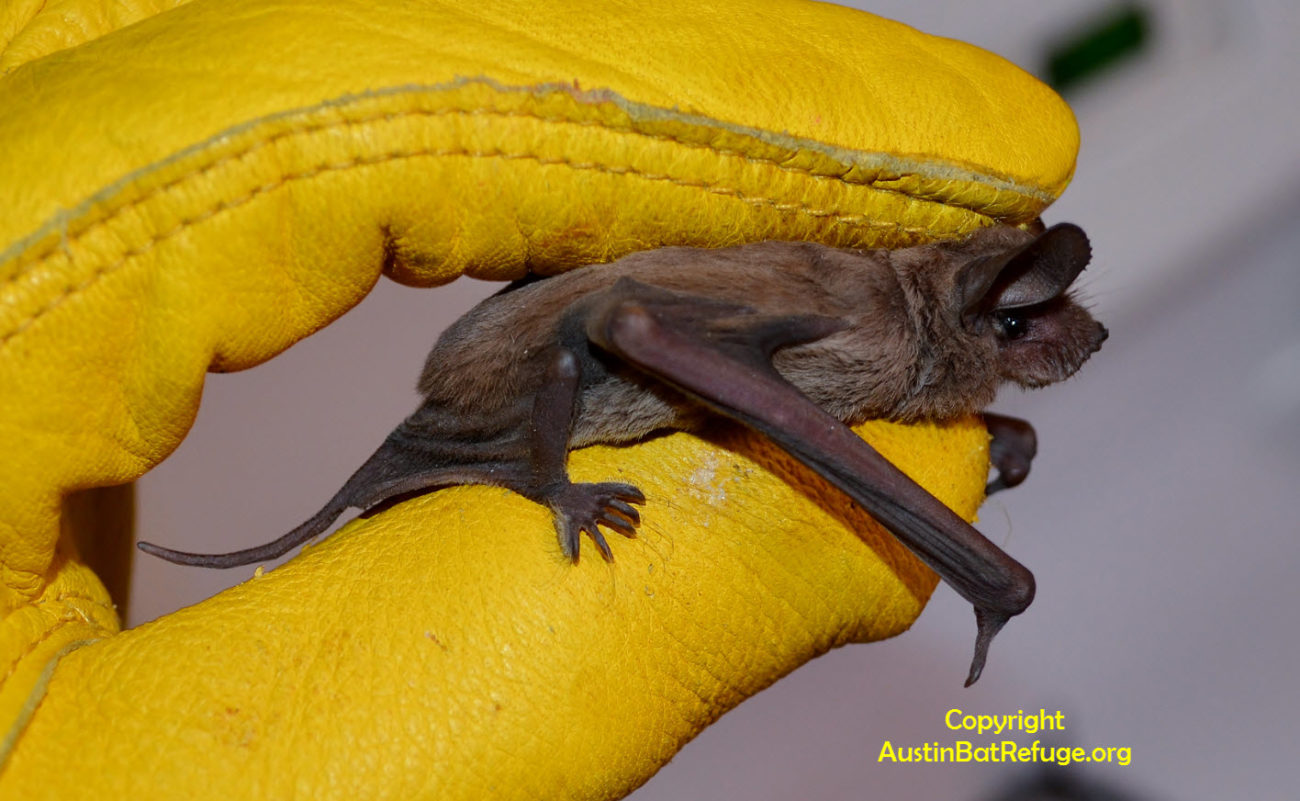

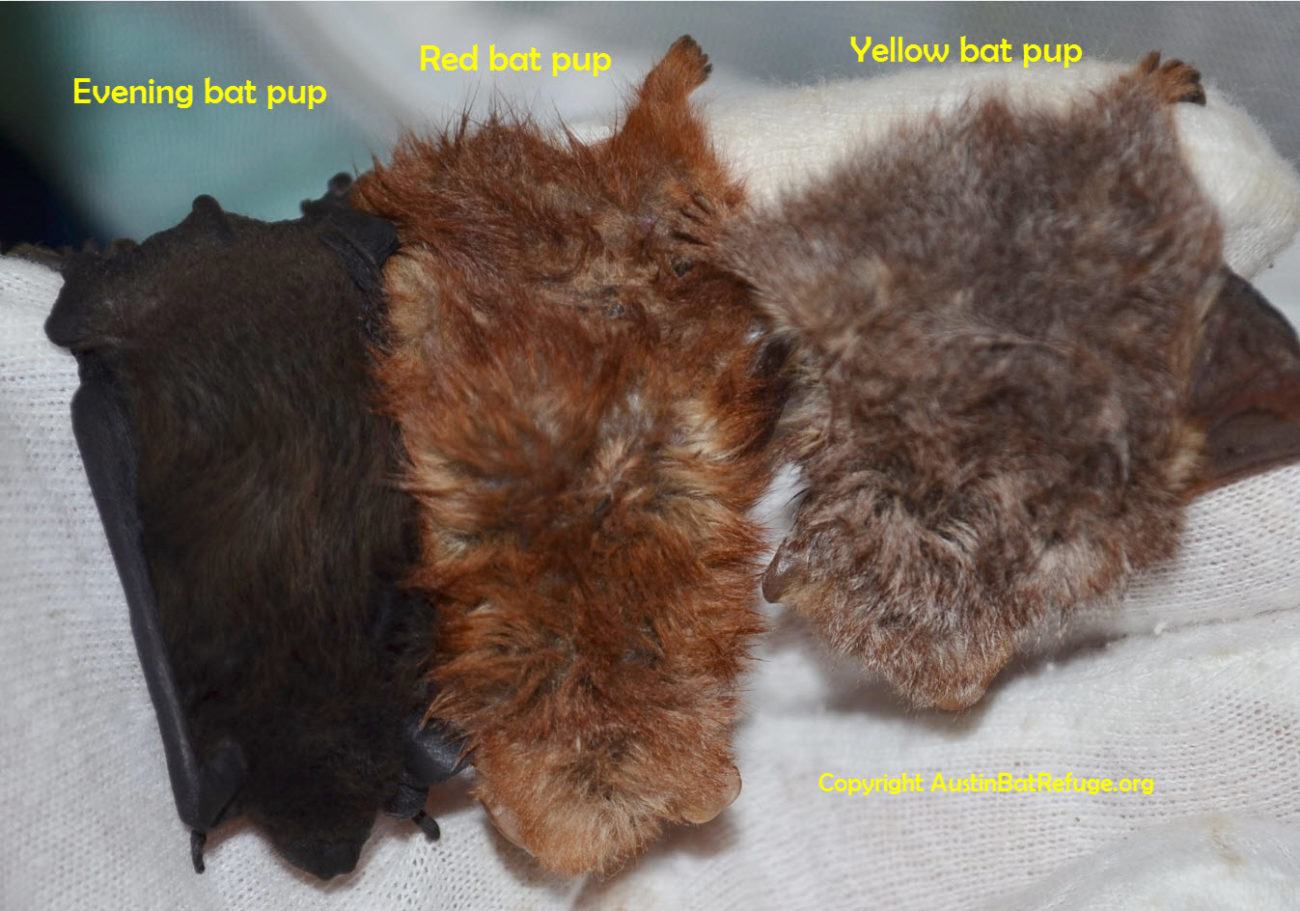
Austin Bat Refuge cares for these bats in a setting that minimizes their stress and fear. Once critical care has stabilized them, they recover in a natural outdoor setting prior to release. If non-releasable, they live a high quality of life with us in the bat gardens or in spacious indoor habitats with plenty of enrichment. Our many visitors have hearts and minds changed by the experience of seeing bats as we care for them. And seeing them in a natural setting is an educational opportunity leveraged by our social media that serves to counter eons of negative myths about bats.
We have cared for close to 750 bats in recent years (139 so far this year), with the majority of them being released back into the wild. If they make it through the first few days, we have a success rate of approximately 86% (which includes those non-releasable individuals living out their lives in our refuge).
Your tax-deductible donation to Austin Bat Refuge will be deeply appreciated, and promptly acknowledged with a document for your tax deduction. We are an all-volunteer, state-permitted 501(c)3 NON-PROFIT organization and receive no government funding. Our costs (not counting volunteer time) can be under $20 for a healthy, quickly-released bat to $200 or more for a bat with a broken bone. Bats that live out their lives in our refuge incur ongoing costs to keep them healthy and well fed.
It is our privilege to care for these orphaned, injured and displaced bats, and your support will give us the ability to do more. Please give us and them a helping hand by mailing a check to our P.O. Box address or contributing to Austin Bat Refuge at this link: Donations
ANY DONATION AMOUNT IS APPRECIATED! And if you can’t give money, please consider donations of volunteer time or items on our Wish List
Thanks so much for caring about these noble, valiant, and amazing flying mammals.
And do please become a part of our team by joining our Bat Pack!
You’ll get our ABR Newsletter with notices for our springtime Bat Walks!
Thanks so much,

Lee Mackenzie
512-695-4116
leemack@austinbatrefuge.org
Dianne Odegard
512-799-8847
Dianne@austinbatrefuge.org
Austin Bat Refuge
https://austinbatrefuge.org
Here we see what looks like the fall migration of Mexican free-tailed bats from Devil’s Sinkhole and Frio caves in Central Texas.
A 17 deg F drop in temp at dusk along with a 26 deg F drop in dew point seem to be the trigger.
We see them travel 100 miles SSW to the irrigated fields of Los Alamos, outside of Allende, Coahuila before they disperse.
They traveled about 116 miles in two hours, not the world speed record for mammals (99 mph) that the Frio bats hold, but not too shabby (58 mph). They seem to be headed toward Cueva de la Virgen in Coahuila, a cave historically known to hold 350,000 Tadarida and 10,000 cave myotis. We’d love to know if anyone is monitoring numbers at that cave and whether there is a big spike in numbers today and for how long. If numbers surge there, will they stay all winter, or will numbers wane as they move further south?
Austin meteorological conditions at emergence are in a chart below the video.

Gabe, the Leader of the Bat Pack, howls to proclaim his dominance over all he surveys!
He wowed over 5,000 students in an on-line Distance Learning event at the Texas Wildlife Association.
Their Halloween annual with our bats, called Bats-a-Billion, is their biggest online event of the year every year.
In addition to Gabe, we brought Buffy (a northern yellow bat), Zonker (an evening bat), and Buddy (a Mexican free-tailed bat).
They are all good bats!
Here’s a beautiful tri-colored female that had been roosting in a stairwell landing on the second story of an apartment building in South Austin. She was in the same place for about a week with no sign that she had been able to fly or feed. Her location made her vulnerable to maintenance workers or perhaps a fearful apartment dweller with a broom.
Wildlife lovers Sonja Peterson and Thanh Vo had been checking on her and were worried that she had not seemed to move for a long time. They were relieved to finally see her stretch her wings a few days back, but were concerned that she might be injured and unable to feed herself. So we went to look and spotted her immediately when we pulled up to the building. We plucked her off the wall (with gloves on) and brought her back to check her out in the flight cage.
Her wings were beautiful, no spotting, no tears, no broken bones.

We checked her out under UV light and no florescence showed up that would indicate Pd, the fungus that causes White-nose Syndrome.
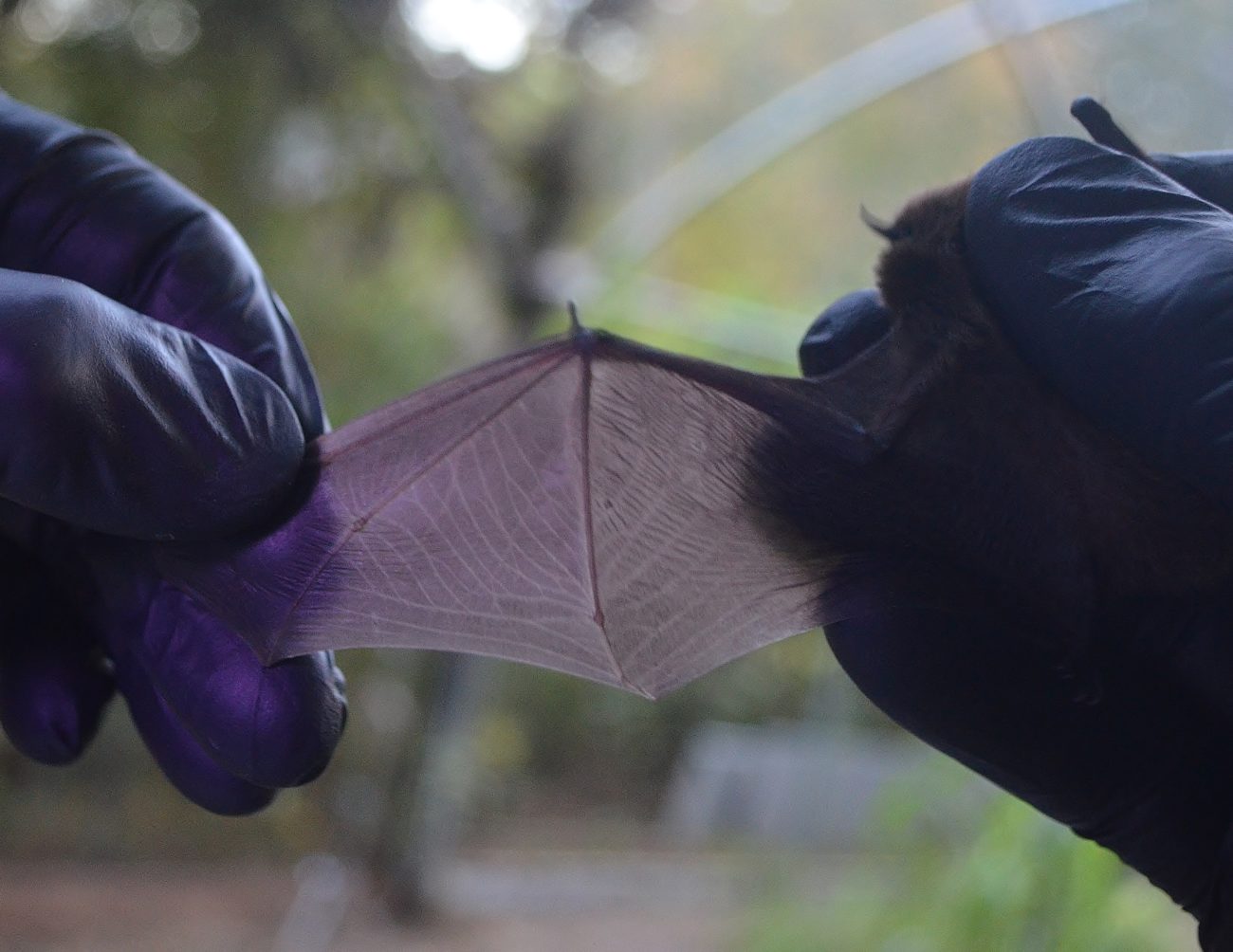
She flew right off when given the opportunity and we watched as she did about six laps around the aviary. This is way more continuous flight than the last tri-colored we took in a few days ago.
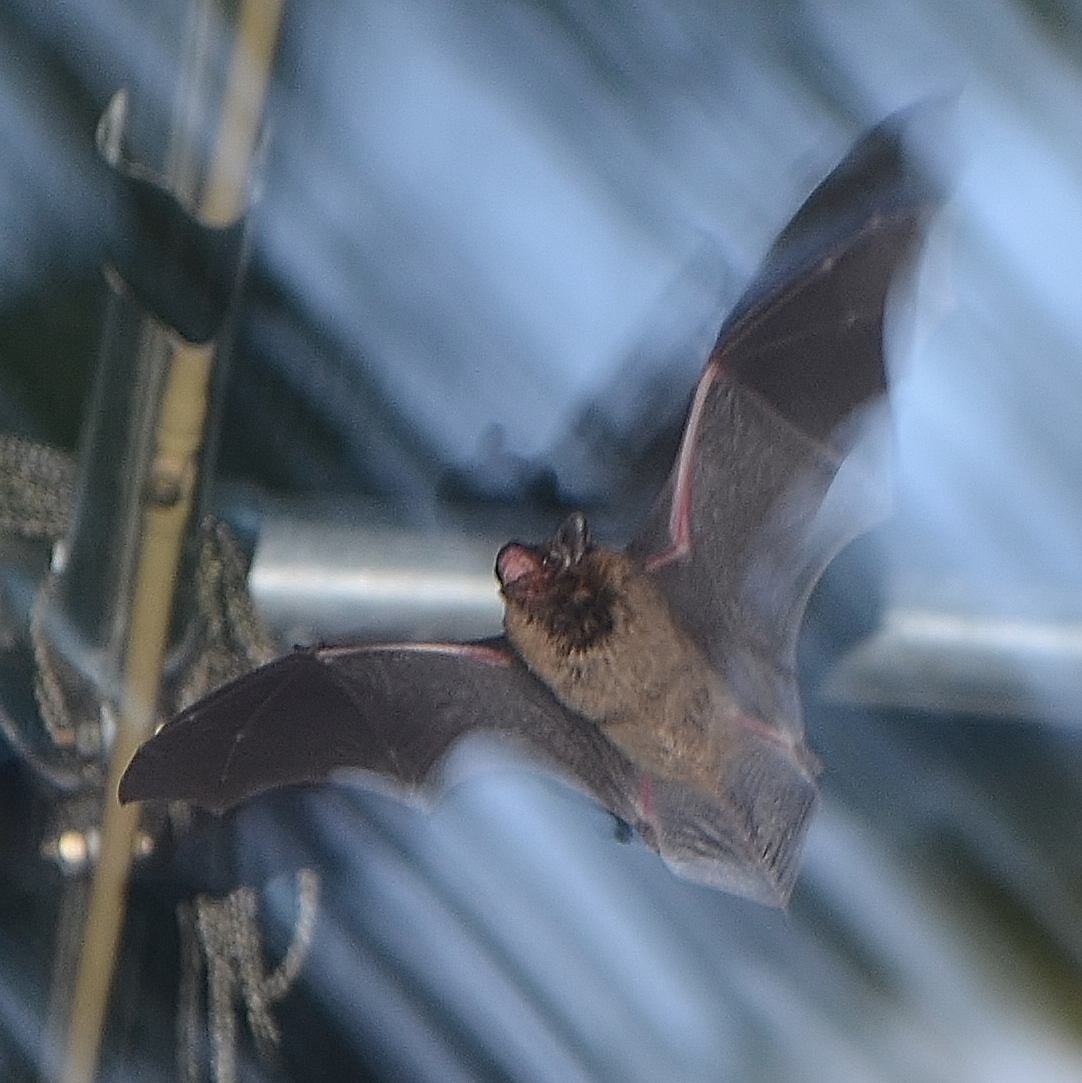
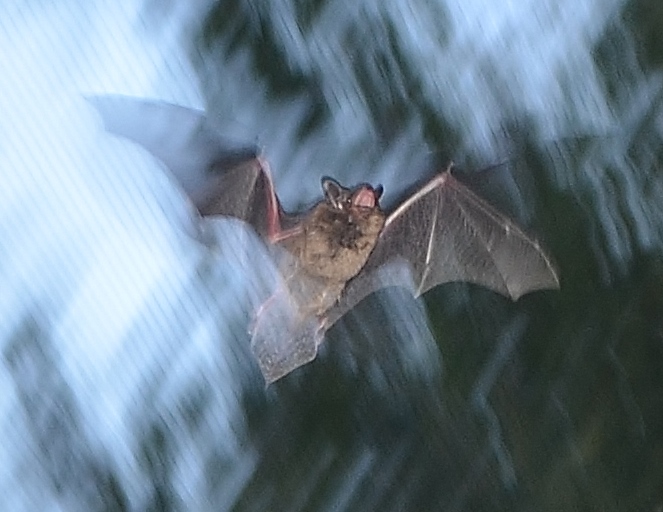
So this leaves us to wonder why she would roost in such an exposed location, vulnerable to any humans walking by or even grackles which could easily spot her against the white stucco.
Most of our tri-colored bats come to us from the upper levels of apartment buildings that have open-ended corridors leading to the various apartments. We think the bats consider these to be open-ended caves and feel quite at home there. At this time of year both sexes of tri-coloreds should be swarming at cave mouths and mating, the females storing sperm for spring births. Is it possible this bat is misplaced and hanging around wondering where the guys are?
We’ll feed her up and then bring her back to the same area and hope she finds a real cave to get her back on track.
Check out our local species info page: https://austinbatrefuge.org/tri-colored-bat/
Sonja and Thanh are doing great work with the feral cats around their apartment. Thanks to them this bat and all other wildlife will fare much better in their area. Thanks for caring Sonja and Thanh!
This free-tail is so happy to be flying again and catching moths around the blacklight!
Soon to be back in the wild skies.
Just look at that smile!
Here’s an angle rarely seen of a Mexican free-tailed bat. If you look closely you can see the long “whisker” hairs sticking out between the toes. “Kind of like you honey” a bridge visitor said to his girlfriend this summer, right before she hit him, hard.
Zonker thought about dinner to go but decided on room service instead!

Mexican free-tailed bats are built for speed. Their long narrow wings are just one of the adaptations that rank them among the fastest bats.
They are, however, also remarkably agile in tight spaces. They use bone structure and muscle fibers to change their wing aspect ratio to short and broad, allowing high maneuverability when necessary.

LG, a northern yellow bat, fell from the top of a very tall palm tree when it was cut down. He was severely bruised all over his body and was in such great pain that he could barely lift his head when he was brought to Marsha Price, our amazing, wonderful friend and bat-savant at our Houston branch. Marsha at first thought he had a fracture on his right wing shaft, but after a while she determined that it was just severely bruised. She nursed him back to health slowly but surely over the next few weeks, to the point where he needed the aviary to see if he would be releasable. Now that the mum & pups are gone, we can better tell about LG’s flight skills. Here’s a photo of him cruising the aviary last night and we can see that he has a some damage to a joint in his right wing.
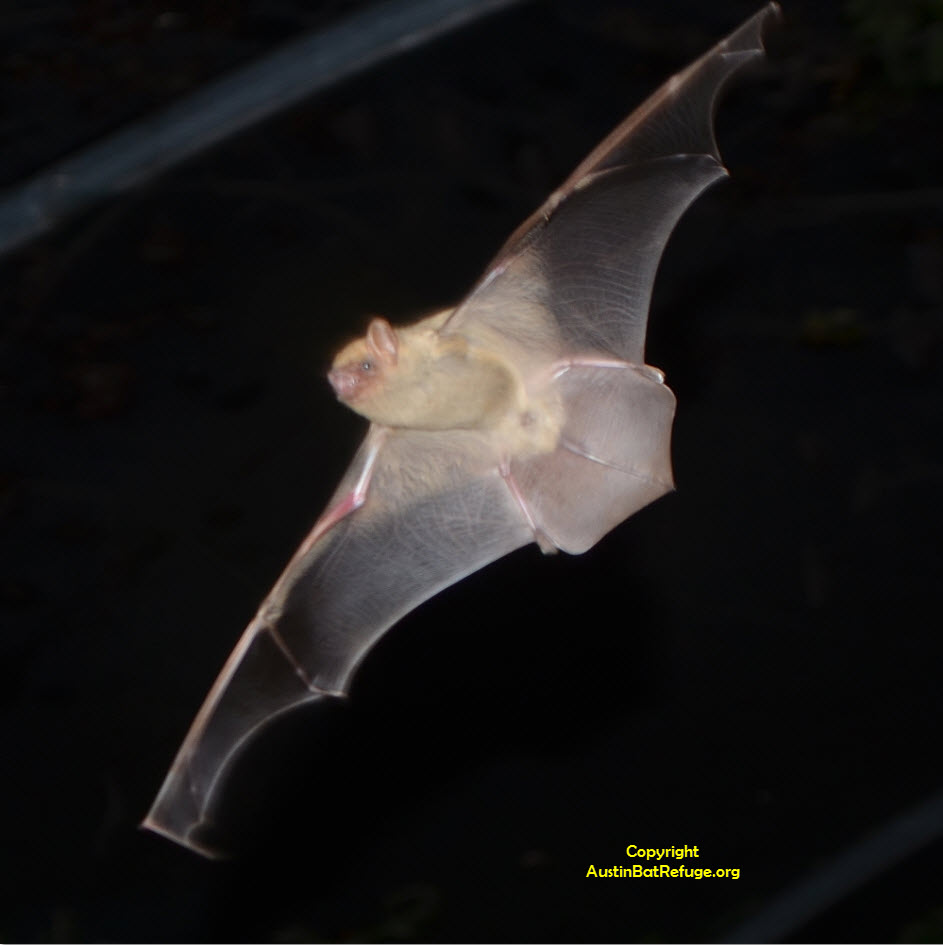
Upon examination, it is obviously inflamed, so we’ll give him Metacam to reduce the swelling and see if he’ll let us check his range of motion in a few days.
He does fly and land quite well, he just doesn’t fly all night like the yellows we released last week. We hope he shows enough improvement to be released before winter, but if not, he’ll be well taken care of while helping with our pest control in the flight cage Winter Garden.